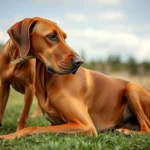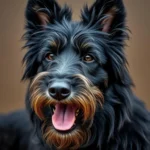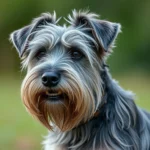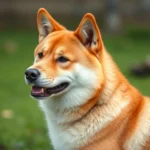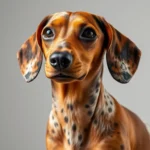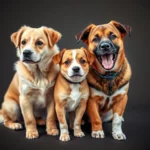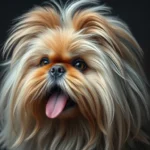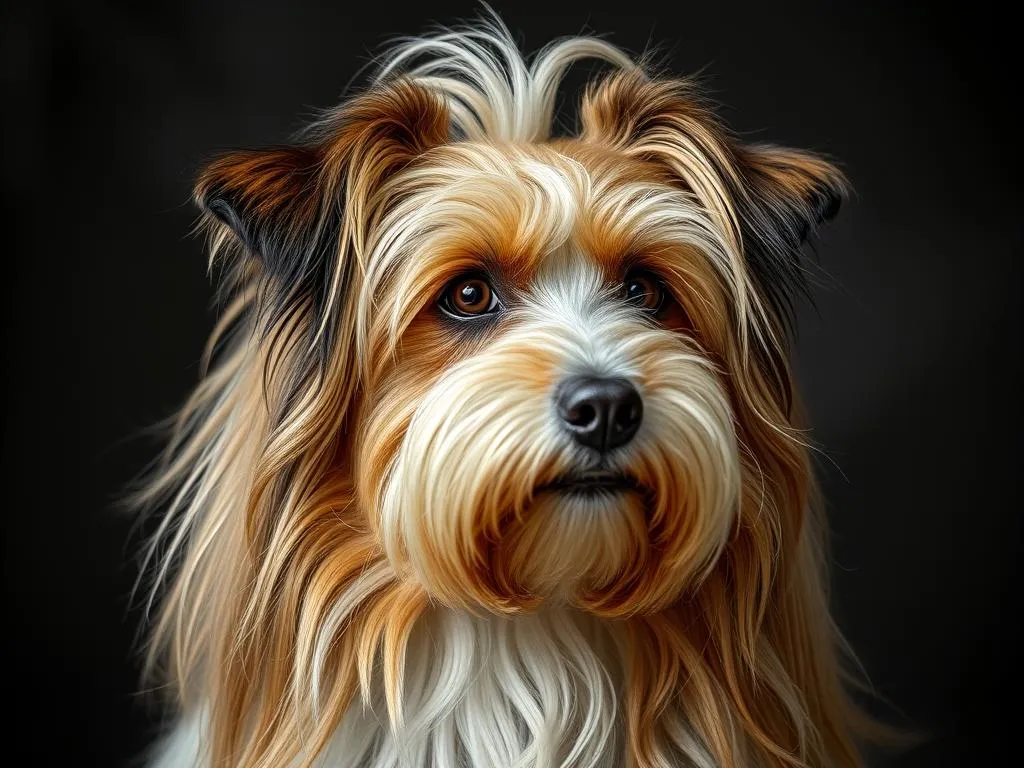
Introduction
The world of dog breeds is vast and diverse, but there’s something particularly enchanting about long haired dog breeds. With their luxurious coats and often striking appearances, these breeds have captured the hearts of dog lovers worldwide. Beyond their beauty, understanding the unique traits, grooming requirements, and temperamental characteristics of long-haired breeds is crucial for any prospective owner.
When considering a long-haired dog, it’s essential to explore the various breeds available, their individual personalities, and what it takes to care for them properly. This guide delves into the intricate details of popular long-haired breeds, providing insights into their histories, temperaments, and care needs.
Understanding Long Haired Dog Breeds
Definition of Long Haired Dog Breeds
Long haired dog breeds are defined by their notably lengthy and often flowing fur. While hair length can vary within breeds, those classified as long-haired typically have hair that extends beyond a few inches. This long fur not only contributes to their aesthetic appeal but also serves various protective and functional purposes.
Common characteristics of long-haired dog breeds often include:
- A distinctive coat that requires regular grooming
- A rich variety of colors and patterns
- An inclination towards shedding, depending on the breed
Benefits of Long Haired Dogs
Owning a long haired dog breed comes with numerous benefits:
- Aesthetic Appeal: Their stunning appearances often turn heads and can make for beautiful companions in any setting.
- Companionship: Long-haired breeds are often known for their affectionate nature, making them excellent family pets.
- Protective Qualities: The long fur can serve as insulation against cold weather, providing some breeds with a natural layer of protection.
Considerations Before Getting a Long Haired Dog
While the allure of a long haired dog is undeniable, potential owners should consider several important factors:
- Grooming Requirements: Long-haired dogs typically require more grooming than their short-haired counterparts. Regular brushing is essential to prevent matting and tangles.
- Allergies and Shedding Concerns: Some long-haired breeds may produce more dander or shed more frequently, which can be a concern for allergy sufferers.
- Space and Exercise Needs: Many long-haired breeds have energetic dispositions and require ample space and regular exercise to thrive.
Popular Long Haired Dog Breeds
Overview of Popular Breeds
Among the myriad of long haired dog breeds, several stand out as particularly popular choices among dog enthusiasts. Below are detailed profiles of some of the most beloved long-haired breeds.
Afghan Hound
The Afghan Hound is known for its striking appearance and dignified demeanor.
- Description and History: Originating from the mountainous regions of Afghanistan, this breed was initially used for hunting large game. Their long, flowing coat was an adaptation to the harsh climates of their homeland.
- Temperament and Personality Traits: Afghan Hounds are often described as independent and sometimes aloof, but they are also playful and loving with their families.
- Grooming Needs and Care Tips: Regular grooming is vital to maintain their luxurious coat. Weekly brushing is recommended, along with occasional baths using a gentle dog shampoo.
Shih Tzu
The Shih Tzu is a small dog with a big personality.
- Description and History: This breed has royal roots, originally bred in China as companion animals for royalty. Their long hair was styled and pampered, reflecting their status.
- Temperament and Personality Traits: Shih Tzus are friendly, affectionate, and known for their outgoing nature. They thrive on companionship and are great family pets.
- Grooming Needs and Care Tips: Daily brushing is essential to prevent tangles and mats, and regular trips to a groomer can help keep their coat healthy and manageable.
Yorkshire Terrier
The Yorkshire Terrier, or Yorkie, is a small breed that packs a lot of charm.
- Description and History: Originally bred in England to catch rats in clothing mills, their long, silky coat sets them apart as one of the most elegant breeds.
- Temperament and Personality Traits: Yorkies are known for their bold and confident nature. They are affectionate and can be quite feisty despite their small size.
- Grooming Needs and Care Tips: Their coat requires regular grooming; daily brushing is ideal to avoid matting, and they should be bathed every few weeks.
Maltese
The Maltese is a toy breed that exudes elegance.
- Description and History: With origins traced back to the Mediterranean region, the Maltese was cherished by the aristocracy. Their long, silky coat is their most defining feature.
- Temperament and Personality Traits: Maltese dogs are cheerful, playful, and very affectionate, making them excellent companions for families and individuals alike.
- Grooming Needs and Care Tips: Daily grooming is necessary to maintain their coat, along with regular baths to keep their fur clean and healthy.
Collie
The Collie is known for its intelligence and loyalty.
- Description and History: Originally bred as herding dogs in Scotland, Collies have a rich history of working alongside humans. They are famous for their striking appearance, especially the Rough Collie with its long mane.
- Temperament and Personality Traits: Collies are gentle, friendly, and highly trainable, making them ideal family pets. They are also known for their protective nature.
- Grooming Needs and Care Tips: Regular brushing, at least once a week, is essential to manage shedding, especially during seasonal changes.
Bichon Frise
The Bichon Frise is a cheerful little dog with a fluffy coat.
- Description and History: This breed has a long history as a companion dog in Europe. Their curly, long hair gives them a distinctive look that many find adorable.
- Temperament and Personality Traits: Bichons are known for being playful, affectionate, and friendly with everyone. They thrive on human interaction.
- Grooming Needs and Care Tips: Regular grooming is crucial to keep their coat free from mats. They should be brushed several times a week, and regular grooming appointments are beneficial.
Lhasa Apso
The Lhasa Apso is a small breed with a rich history.
- Description and History: Originating in Tibet, this breed was traditionally used as a sentinel in monasteries. Their long hair helped them withstand the cold climate of their homeland.
- Temperament and Personality Traits: Lhasa Apsos are known for their loyalty and can be somewhat reserved with strangers, making them excellent watchdogs.
- Grooming Needs and Care Tips: Daily brushing is essential to prevent tangling and matting, and regular grooming appointments are recommended to maintain their coat.
Grooming and Care Tips for Long Haired Breeds
Grooming Essentials
Maintaining the coat of long haired dog breeds requires a good set of grooming tools. Essential tools include:
- Wide-toothed combs for detangling
- Bristle brushes for smoothing
- Grooming scissors for trimming
- De-shedding tools during shedding seasons
A regular grooming schedule is also crucial. For most long-haired breeds, a weekly grooming session is a minimum, while daily grooming may be necessary for breeds with particularly dense or tangled fur.
Bathing Techniques
Bathing frequency can vary, but generally, long-haired breeds should be bathed every 4-6 weeks. Here are some tips:
- Use a high-quality dog shampoo that suits your dog’s skin type.
- Rinse thoroughly to remove all shampoo residues.
- Follow up with a dog conditioner to keep the coat soft and manageable.
Health Considerations
Regular vet check-ups are essential for long-haired breeds to monitor their overall health. Specific health concerns linked to long hair include:
- Skin Issues: Long-haired breeds may be more prone to skin problems due to matting and lack of airflow.
- Ear Infections: Some breeds may develop ear infections if their ear hair isn’t managed properly.
- Dental Health: Regular dental care is important as smaller breeds often face dental issues.
Training Long Haired Dogs
Basic Training Techniques
Training is essential for all dog breeds, including long haired dog breeds. Early socialization and obedience training can help ensure a well-adjusted pet. Recommended training methods include:
- Positive reinforcement techniques, such as treats and praise.
- Consistent commands and routines to help dogs understand expectations.
Dealing with Behavioral Issues
Long-haired breeds can exhibit common behavioral problems such as separation anxiety and excessive barking. Here are some tips for addressing these issues:
- Separation Anxiety: Gradually acclimate your dog to alone time, starting with short periods.
- Excessive Barking: Identify triggers and work on desensitization through training and distractions.
Conclusion
The charm and beauty of long haired dog breeds make them a popular choice for many dog lovers. Their affectionate nature and unique personalities can bring immense joy and companionship to families and individuals alike. However, it’s essential to consider their grooming needs, health requirements, and training challenges before making a commitment.
By researching and understanding the different long-haired breeds, potential owners can select a companion that best fits their lifestyle and preferences. With the right care, a long-haired dog can be a loving and loyal addition to any home.
